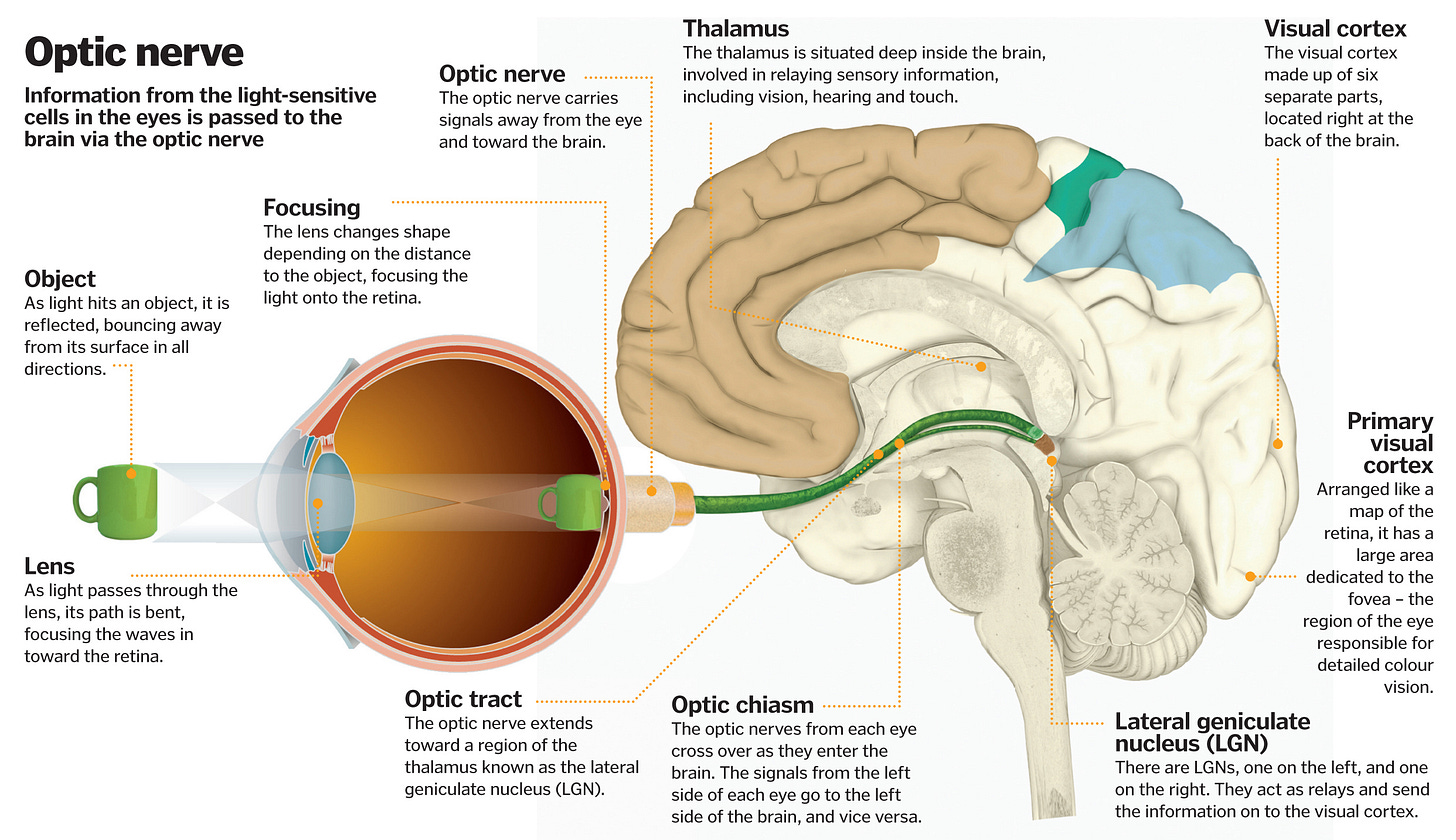Rupert Sheldrake has made a decades-long study into scopaesthesia, or the sense of being stared at. We all know the feeling: We are in a public space and have a sense that we are being watched. We turn around quickly to look, just in time to catch someone looking away. Sheldrake has compiled a massive amount of research on the subject, and anyone with intellectual integrity who examined the evidence would have to admit that the phenomenon is real. It includes experiments where the subjects are in an enclosed space, and the person staring is in another room, watching by closed-circuit television.
A dear friend of mine was recently expressing respect and admiration for Sheldrake. They also expressed a certain level of doubt in some of the man’s work by stating, perhaps somewhat facetiously, that they didn’t think there was a beam that shoots out of the eye. Somewhat facetiously in return, I responded “lol you mean like Homelander?”
The Boys is not a bad show, but some of these superpowers — like the laser eyes — are just such hokey 50’s science fiction stuff. I think a lot of initial reactions to out-of-the-mainstream scientific claims tend to get interpreted in the vein of hokey 50’s sci-fi. And The Boys is kinda trendy right now, so it seemed an appropriate, if still a very facetious, response.
The popular explanation for how vision works is all very yin, passive. It’s about receiving and taking in signals from the external world. Eyesight begins when light enters the eye through the cornea, which bends the light to pass through the pupil. The light then travels through the lens, which further focuses it onto the retina at the back of the eye. The retina, composed of photoreceptor cells called rods and cones, converts the light into electrical signals. These signals are transmitted via the optic nerve to the brain, specifically to the visual cortex in the occipital lobe. The visual cortex processes these signals to create coherent visual images.
From having read Jordan Peterson, and watching some of his lectures online, I know that this out-to-in, yin explanation is not entirely valid, even from the perspective of mainstream science. Peterson discusses how perception is not a completely passive process and emphasizes the role of goals and intentions in shaping how we see the world. According to this perspective, the brain actively selects and interprets visual information based on our motivations and objectives. Instead of merely recording a static image, the visual system prioritizes details relevant to our current goals, filtering out extraneous information. This means that what we perceive is influenced by what we aim to achieve, highlighting the dynamic interaction between sensory input and cognitive processes in the formation of visual experiences.1 Not exactly laser beams coming out of the eyes, but this is definitely a yang element to vision: Our intentions and motivations coming from inside of us, and projecting onto the outer world.

Even at the pre-neuronal level, it would be silly to treat vision as a passive process, as there are many outwards-focused elements of the ocular complex. The iris adjusts the pupil size to control the amount of light entering the eye. Quick, simultaneous movements of both eyes in the same direction, called saccadic movements, are crucial for scanning the environment and reading. The muscles around the eye control not just in which direction the eye is looking, but what the eye is looking at. This means making adjustments for any changes in position of the eyes of the observer, as well as movements of the focus of attention itself.
Mechanists and materialists will object that, while our intentions play a critical role in how the ocular complex behaves, and how the brain processes signal, it’s still entirely localized within the observer, and the only thing coming in or out is the light entering the eyes. That the values, objectives, and mental models of the world are all residing within the observer’s brain. They are still looking at this from the hokey 50’s sci-fi laser-eyes kind of attitude. Honestly, why would it even have to be a beam? There are plenty of phenomena we describe using fields — gravity, electricity, and magnetism being obvious examples — to explain certain causal relationships as “action at a distance.” We do not need to imagine an energy beam to explain the gravitational pull of the Earth on the Moon.
I don’t recall Sheldrake ever proposing a mechanism for the phenomenon of the sense of being stared at. But in this 15 minute presentation, he does seem to at least imply that scopaesthesia can be explained with fields:
The daoist view is that there is yin and yang in vision, just like in anything else. The yin part is receiving. This includes the light energy entering the eye, as we understand it in the popular model of vision. The yang part issues outwards, as we send our intentional energy out towards the thing we are looking at.
Whatever explanation of vision you want to go with, there needs to be room for some force directed from the observer towards the observed. You have to be able to explain why an abundance of evidence shows scopaesthesia to be a real phenomenon.
Jordan Peterson explicitly cites several researchers in his discussions about how vision is influenced by goals and intentions. Some of these researchers include:
Eleanor Rosch: Known for her work on categorization and prototypes, which influences how we perceive and organize visual information based on our intentions.
Jerome Bruner: A cognitive psychologist who emphasized the role of expectations and intentions in perception, contributing to the understanding that perception is an active process.
James J. Gibson: Famous for his theory of affordances, which suggests that what we perceive is directly related to our potential actions in the environment, aligning perception with goals and intentions.
Karl Friston: Known for his work on the free energy principle and predictive coding, which posits that the brain actively predicts sensory input and updates these predictions based on incoming information, linking perception to our goals and intentions.






Whether it's goals and intentions, or some other filter, I would comment that I have always lived in countries with bi-lingual road signs. I never see the information written in the languages that I can't read. I only see/perceive the information that I can understand 🤷🏼♂️